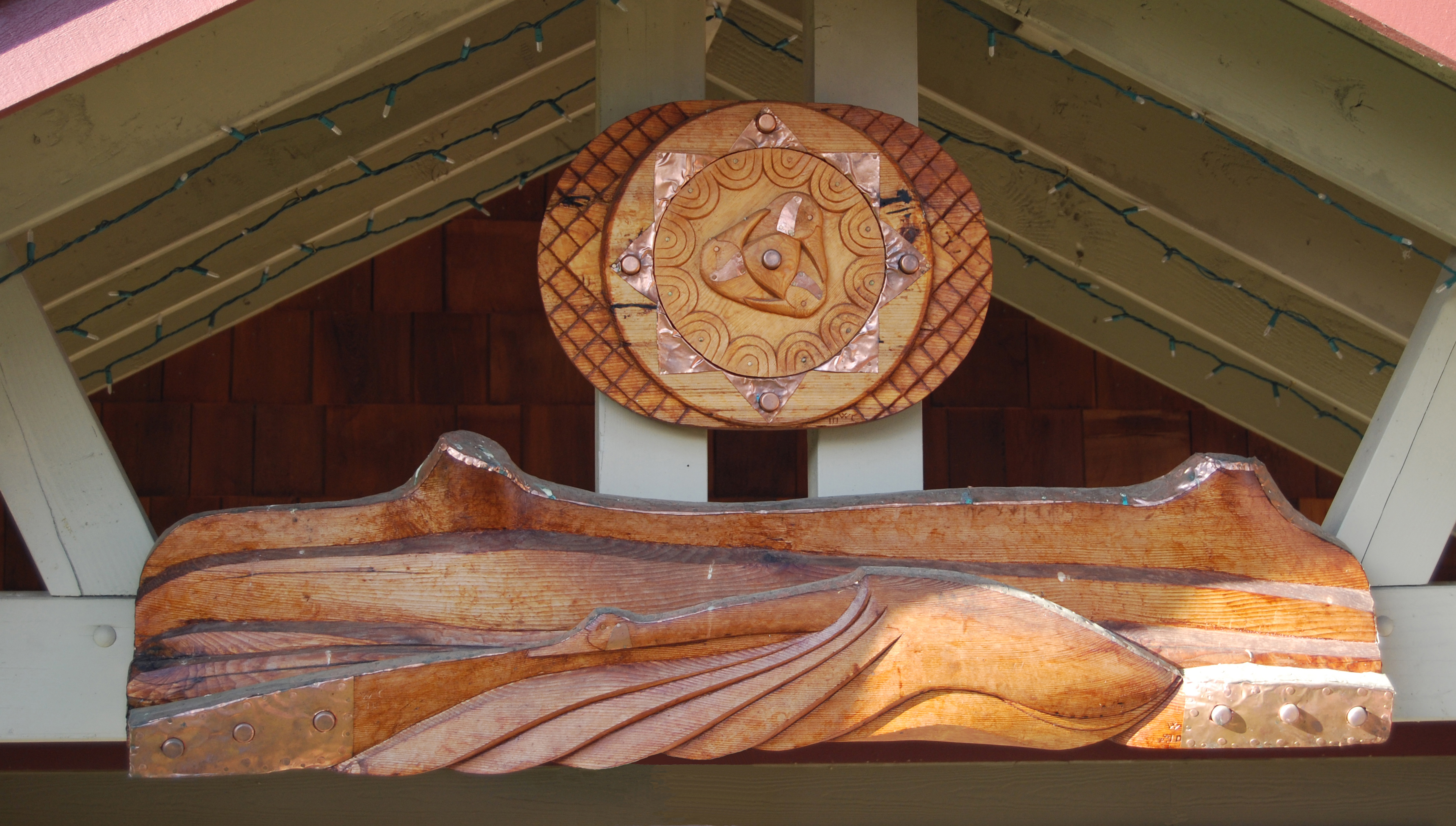Why the Goose?
Sandy Tilcock
May 17th, 2017
Why have I chosen the Canada Goose as my totem? After living in the Willamette Valley for a few years, I became more aware of the way migrating geese marked our seasons. They passed over our city, Eugene, and often roosted at night west of town at Fern Ridge Reservoir. I heard their calls as they passed over. Sometimes, after a hard rain, they would circle all night, mistaking wet streets for the lake.
During this time, I read Aldo Leopold’s Sand County Almanac. The book resonated with my lifelong love of the outdoors and my increasing concern for our fragile environment. Concerned for the Minnesota landscape he loved, Leopold wrote: “What…if there be no more deer in the hills, and no more quail in the coverts? No more snipe whistling in the meadow, no more piping of widgeons and chattering of teal as darkness cores the marsh; no more whistling of swift wings when the morning star pales in the east? And when the dawn-wind stirs through the ancient cottonwoods, and the gray light steals down from the hills over the old river sliding softly past its wide brown sandbars—what if there be no more goose music?”
The goose music I heard in November meant winter rains were coming. February and March goose music implied that spring was near. Today in Eugene, as in many communities, large congregations of geese have opted to live year round and we hear their music in summer and winter as well, often at morning and evening, bookending the day. I listen for them and watch for them on my daily bicycle rides along the Willamette River.
Over the years, I became more curious about these birds, their symbolism, life cycle, and family life. The goose never leaves one of its kind behind. During migration, should a goose become injured, another goose will leave the flock and remain with its comrade, staying until the injured one recovers or dies. Attributes of the goose are communication, determination, fellowship, teamwork, confidence, protection, bravery, and loyalty. Canada Geese have intricate methods of communication. They work as a team to communicate warnings and identify prime landing sites. They mate for life and are very protective of their young. It is said those with the goose totem are the clear communicators, defenders and compassionate keepers of the community. I strive each day to live up to those attributes and to be worthy of my totem creature.
Recently, as I was riding along the river, I was thinking about the changes that our earth and political world are undergoing, and observing large Canada Goose flocks feeding near the banks. I know that the large numbers of geese are considered a nuisance due to the impact they have on our parks and farmlands. Dare we compare this with the impact we, the human population, have on the lands and environment? Who is responsible for the most damage? I have no answers, only thoughts and observations.
The above cedar carving by William “Cedar” Caredio was commissioned in 2009 for the lone goose press studio. Cedar provides this description of the origin and process of this piece:
Sun-Moon Design. The inside circle of light wood depicts three biting geese and is carved from a piece of Port Orford, Oregon (white) cedar. The wood was found on the coast in the Bandon Area. The outer red colored wood is incense cedar harvested from a dead-standing tree by Mount June in the Cascade Range (Oregon). Cedar wood is impervious to weather, which gives it lasting characteristics in the environment. It represents protection and has spiritual qualities. Native peoples of the Cascadian region burn the wood and needles as a smudge for spiritually cleansing purposes.
The three concentric circle design has Celtic roots and represents the totality of being. The innermost circle is the stage of struggle and evolution. The next circle stands for purity, and a rejoicing force. The outer circle is infinity. The center circle involving struggle and evolution has the three-goose design. The three-bird design represents three (triple), a sacred number to Celtic peoples. Early tribal stonework of Scotland is the origin of the design. The Celts and native peoples of the United Kingdom revered water birds. The birds were of the three realms: water, land, and air. The goose brings creative and productive power. To make sure the goose keeps laying golden eggs, we must keep the goose alive—well fed, well rested and well exercised.
The goose has come to symbolize seasonal change. It is a solar bird and ruled by the sun, thus its migratory habits. Two crescent-shaped moons represent the night time flight and balance the male solar energy with the female moon energy.
The carving is a landmark symbolizing the migratory route of the Canadian goose. The honking of the geese can be heard above as the endless movement of the flocks continues.
